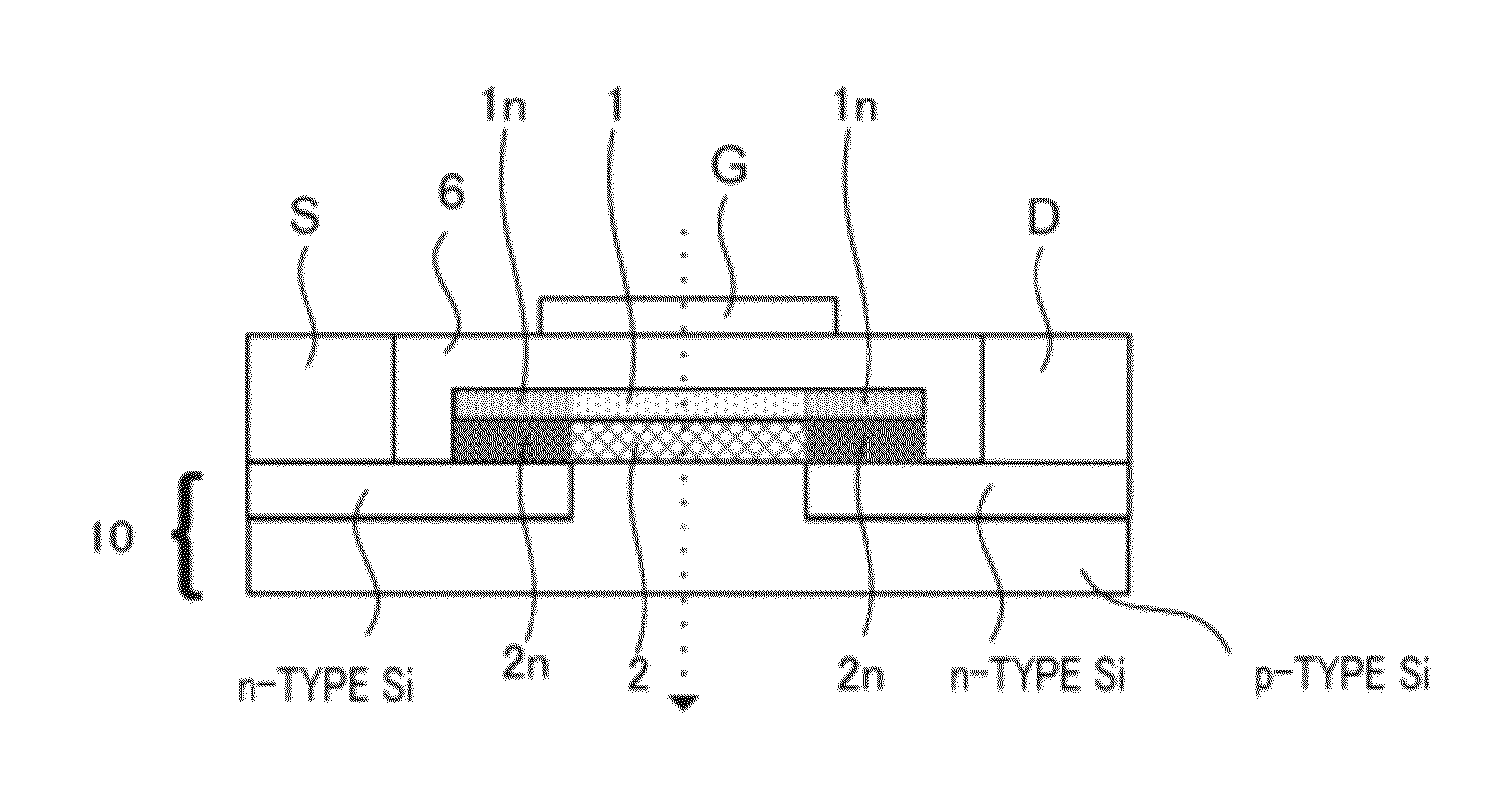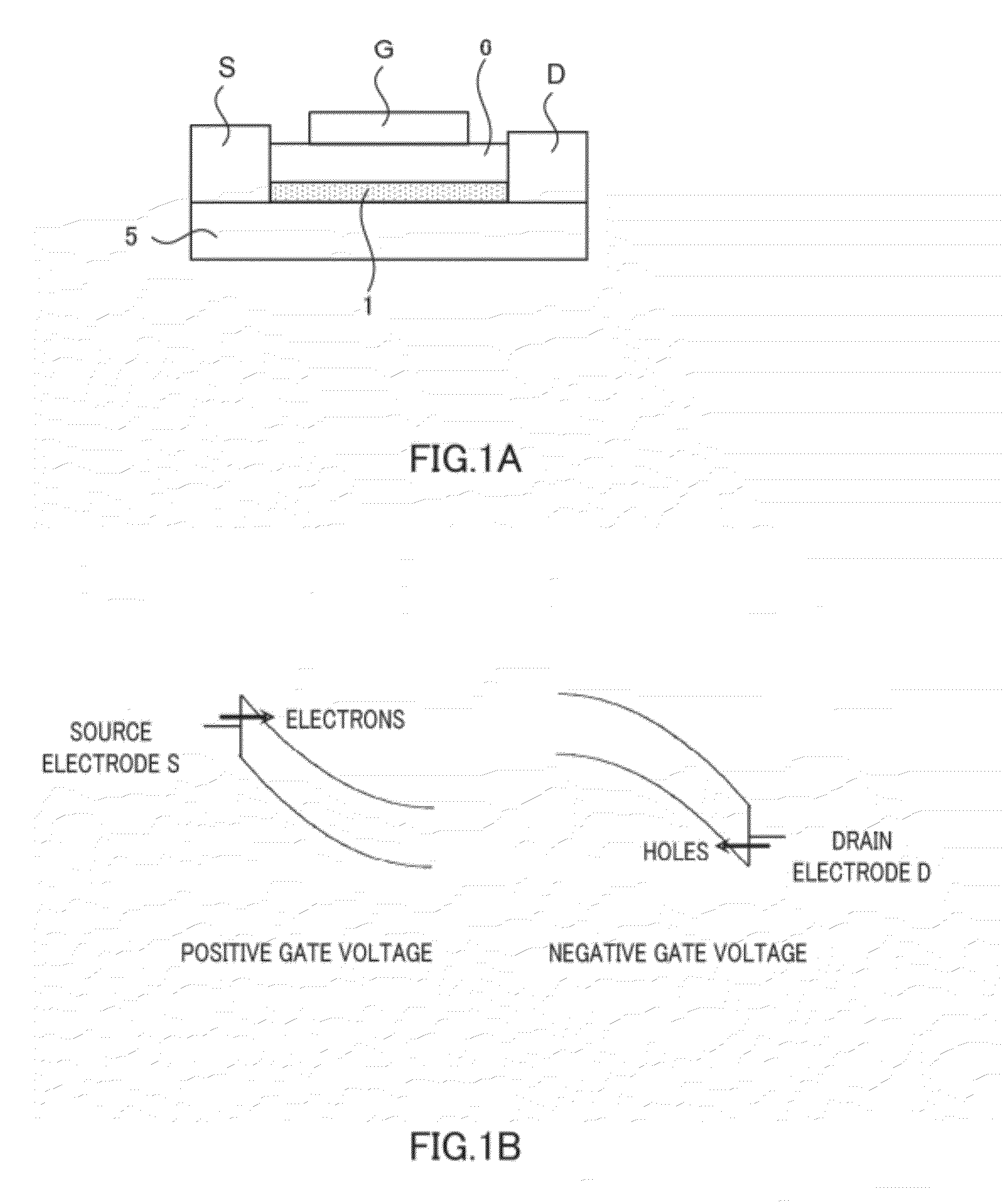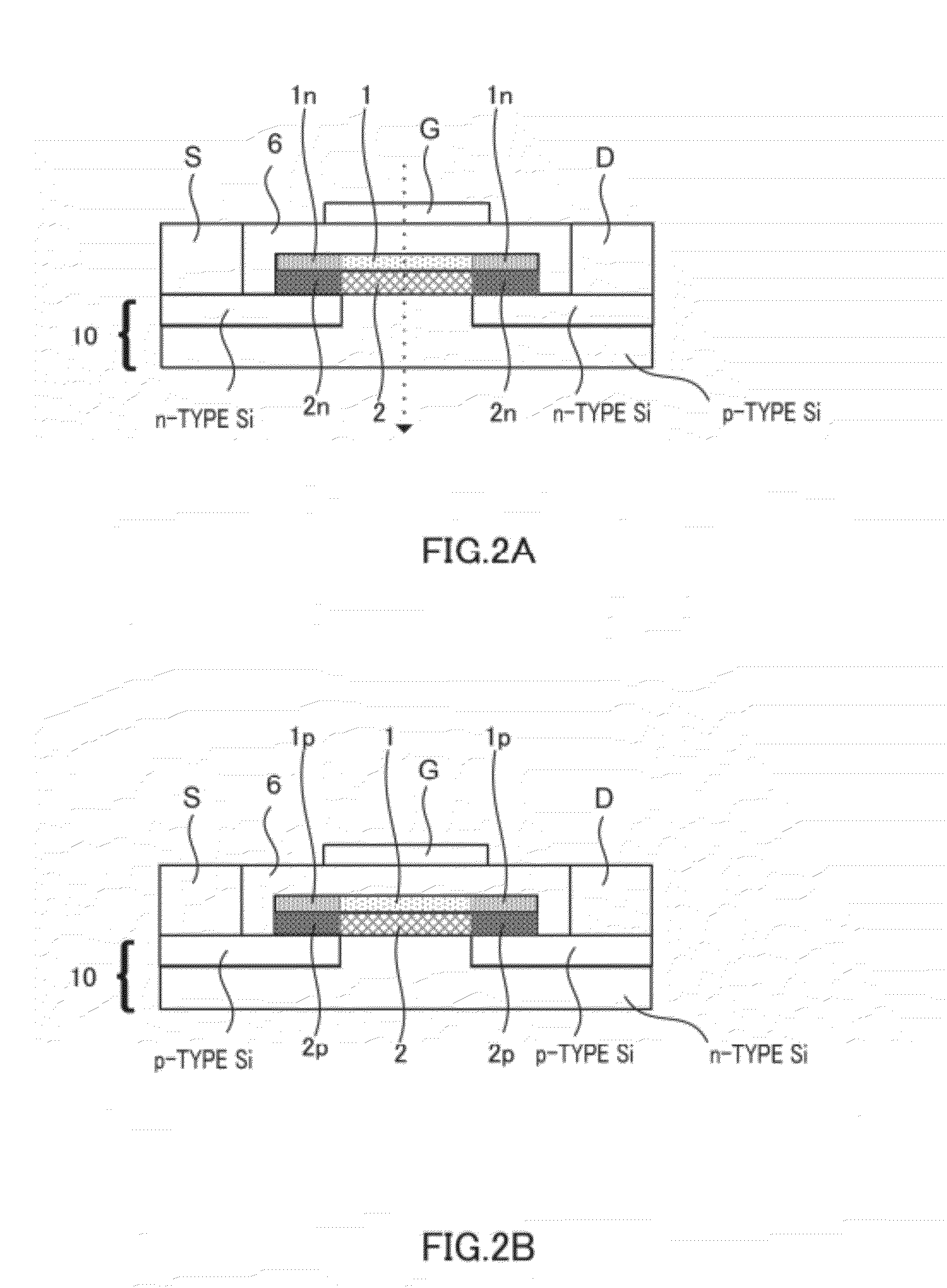Field-effect transistor
a field-effect transistor and transistor technology, applied in the field of field-effect transistors, can solve the problem of extremely difficult fabrication, and achieve the effect of low electric power consumption
- Summary
- Abstract
- Description
- Claims
- Application Information
AI Technical Summary
Benefits of technology
Problems solved by technology
Method used
Image
Examples
Embodiment Construction
[0056]A field-effect transistor of the present invention has a semiconductor substrate, a channel including a graphene layer, source and drain electrodes, and a gate electrode. The field-effect transistor of the present invention may be an n-type field-effect transistor or may be a p-type field-effect transistor. The channel including a graphene layer and the source and drain electrodes are not in direct contact but are connected via a semiconductor layer.
[0057]The semiconductor substrate of the field-effect transistor of the present invention is not particularly limited, but is preferably a silicon substrate. This is because, as described later, a graphene layer that will be a channel must be disposed on the semiconductor substrate; and a silicon carbide layer that will be a precursor of the graphene layer can be epitaxially grown on a silicon substrate.
[0058]Further, the semiconductor substrate in the n-type field-effect transistor may be a p-type silicon substrate; and the semico...
PUM
 Login to View More
Login to View More Abstract
Description
Claims
Application Information
 Login to View More
Login to View More - R&D
- Intellectual Property
- Life Sciences
- Materials
- Tech Scout
- Unparalleled Data Quality
- Higher Quality Content
- 60% Fewer Hallucinations
Browse by: Latest US Patents, China's latest patents, Technical Efficacy Thesaurus, Application Domain, Technology Topic, Popular Technical Reports.
© 2025 PatSnap. All rights reserved.Legal|Privacy policy|Modern Slavery Act Transparency Statement|Sitemap|About US| Contact US: help@patsnap.com



